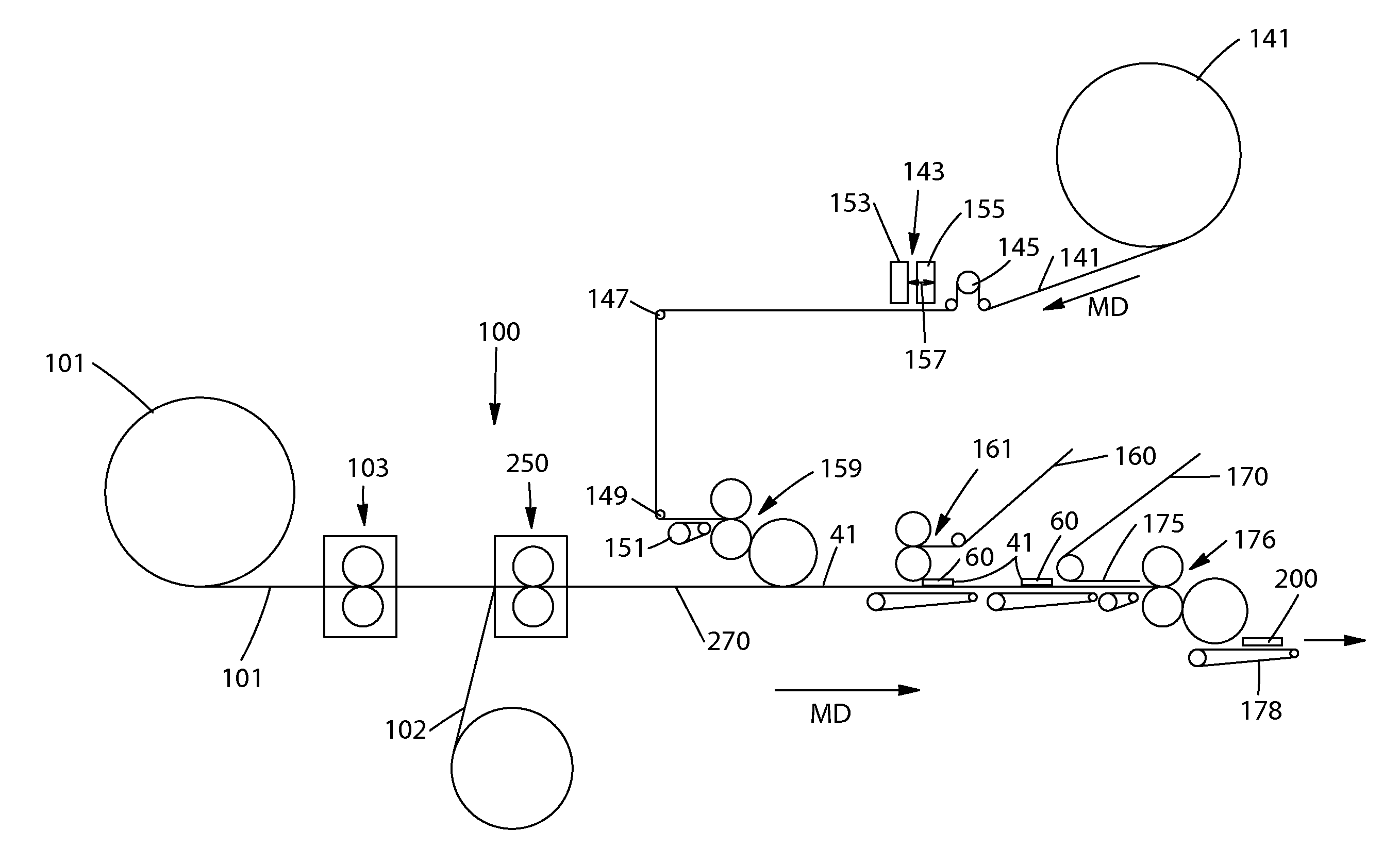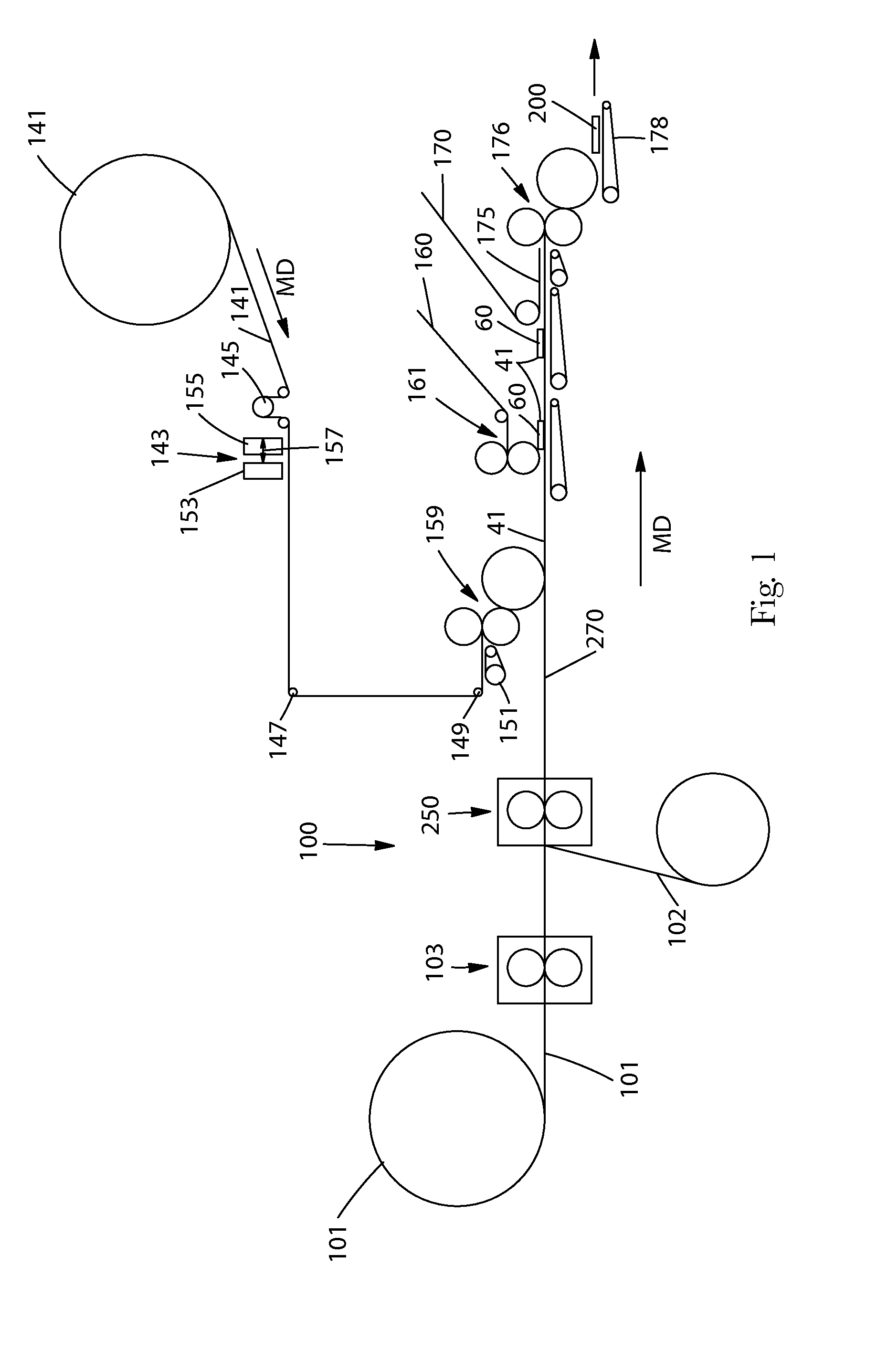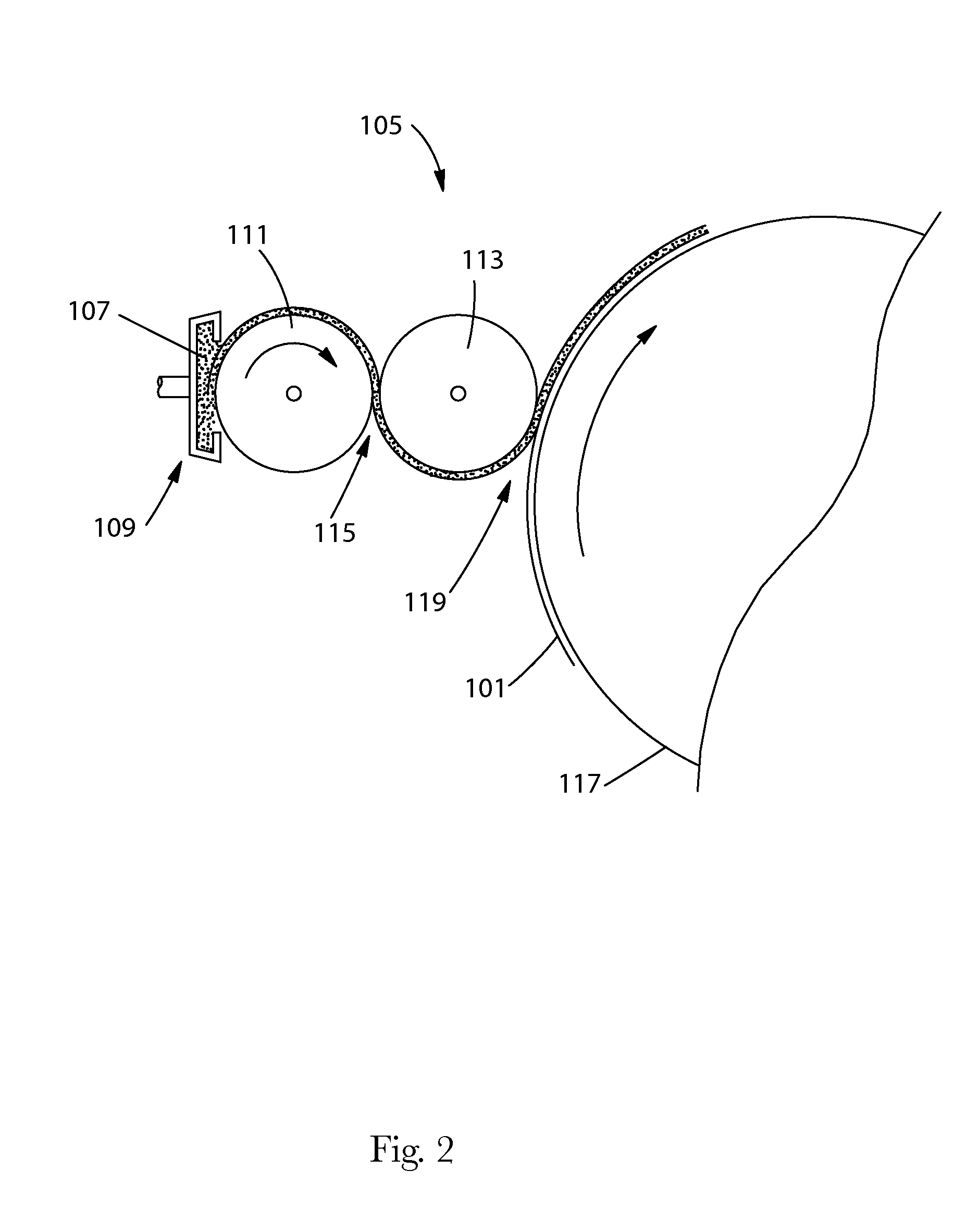Method of Producing a Composite Multi-Layered Printed Absorbent Article
a multi-layer, absorbent article technology, applied in the field of multi-layer printing absorbent articles, can solve the problems of menses, vaginal discharge, urine and feces, menses stain appearing as stains on the body facing surface of composites, and the wearer of absorbent articles may not be viewed favorably by the wearer of absorbent articles, etc., and achieve the desired color region of absorbent articles.
- Summary
- Abstract
- Description
- Claims
- Application Information
AI Technical Summary
Benefits of technology
Problems solved by technology
Method used
Image
Examples
Embodiment Construction
[0022]The present invention relates to a method of producing a printed multi-layered absorbent article on a converting line. A first precursor web is supplied to a converting line and printed with a first colored region using a contact method of printing, for instance, flexographic printing, rotogravure printing, offset printing, lithographic printing, screen printing, or the like. The first precursor is then combined with a second precursor web to form a composite substrate, such as a topsheet. A lower substrate, such as a non-woven or cellulose based secondary topsheet is also supplied to the converting line and printed with a second colored region using a non-contact method of printing, such as, for example, wax jet printing, ink jet printing, bubble jet printing, laser jet printing, or the like. Following the printing steps the composite substrate and lower substrate are combined in the process of producing an absorbent article, such as a feminine sanitary napkin.
[0023]As used h...
PUM
| Property | Measurement | Unit |
|---|---|---|
| elongation to break | aaaaa | aaaaa |
| elongation to break | aaaaa | aaaaa |
| elongation to break | aaaaa | aaaaa |
Abstract
Description
Claims
Application Information
 Login to View More
Login to View More - R&D
- Intellectual Property
- Life Sciences
- Materials
- Tech Scout
- Unparalleled Data Quality
- Higher Quality Content
- 60% Fewer Hallucinations
Browse by: Latest US Patents, China's latest patents, Technical Efficacy Thesaurus, Application Domain, Technology Topic, Popular Technical Reports.
© 2025 PatSnap. All rights reserved.Legal|Privacy policy|Modern Slavery Act Transparency Statement|Sitemap|About US| Contact US: help@patsnap.com



